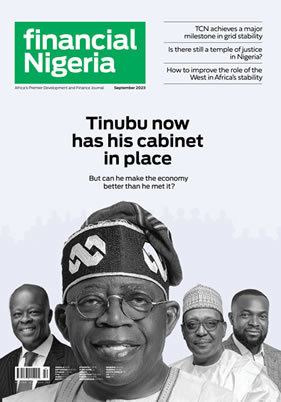Africa’s efficiency innovation problem

Feature Highlight
It is clear that Africa needs to increase its participation in global trade. However, trade alone is not enough.
On February 10, the World Bank released the report, Africa in the New Trade Environment: Market Access in Troubled Times. In it, the authors argue that Africa must connect to the global economy in order to “catch up with the rest of the world.” China, South Korea, and Malaysia are provided as examples of countries that have benefited greatly from their participation in international trade.
“To reduce poverty on a large scale and transform their economies,” the authors write, “African countries must scale up and diversify their participation in international markets and global value chains (GVCs). The global economy is a source of growth that African economies cannot afford to ignore. To catch up with the rest of the world, there is no alternative: the continent must link its production and trade to the global economy to take advantage of the unlimited demand and innovation along the supply chain.”
Despite generous trade agreements, such as the European Union’s Everything but Arms (EBA) and the United States’ African Growth and Opportunity Act (AGOA), which enable low- or non-tariff trade for select African countries trade with the United States and the European Union, Africa still accounts for just two percent of global production and three percent of global trade.
Why, if we know the value of international trade, does Africa continue to lag behind?
Understanding how different types of innovation impact an economy sheds light on this question.
In our book, The Prosperity Paradox: How Innovation Can Lift Nations Out of Poverty, we categorize innovation into three types: market creating, sustaining, and efficiency innovations.
Market creating innovations target nonconsumers – the segment of the population who would benefit by owning or using a product but cannot due to the product’s cost, time, or the expertise required to use it. These innovations transform complex and expensive products into simple and more affordable products, making them accessible to a wider segment of the population. For example, the proliferation of mobile phones across Africa is a perfect example of a market-creating innovation having significant impact. Without investing in market-creating innovations, it’s difficult for an economy to develop.
Sustaining innovations target demanding, high-end customers with better performance than what was previously available. These innovations are also a critical component in the economic engine and are necessary for companies and countries to remain vibrant and competitive. But because they target existing consumption, their impact on the economy tends to be marginal. They have a substitutive effect on production and consumption. In other words, when companies produce newer and better products, they stop producing and selling older versions.
Efficiency innovations enable companies to do more with less resources. These innovations allow companies to squeeze as much as possible from existing or newly acquired company resources. Efficiency innovations free up capital but are notorious for eliminating jobs because they, like sustaining innovations, are targeted at existing consumers.
Efficiency innovations come in all shapes and sizes, from outsourcing company operations to lower cost regions and eliminating jobs to leveraging technology that improves efficiency. The most visible type of efficiency innovation is the resource extraction industry. Whether it’s gold, oil, or diamonds, the resource extraction sector is known for squeezing out as much as it can for as little cost as possible.
This is different from market-creating innovation because the focus on market-creating innovation is making products and services more affordable for nonconsumers.
Africa’s trade deals are dominated by efficiency innovations. The World Bank report notes, “So far, exports of natural resources, mainly oil, account for the bulk of Africa’s exports through these preferences [AGOA and EBA]. The next-largest boost has been for textile and apparel products, which have benefited from the largest tariff preferences.”
From a development standpoint, there are three main problems with efficiency innovations. First, they are susceptible to unpredictable price fluctuations. Once oil or diamond prices go down, it can cause economic shocks to many countries reliant on these exports.
Second, as American University economist Robert Blecker, explains, “the market for developing country exports of manufactures is limited by the capacity [and willingness] of the industrialized nations to absorb the corresponding imports.” So, even with textiles and apparel, African countries are limited by the size of the highly competitive markets in wealthier countries.
Finally, trade, built primarily on efficiency innovations, leads to a race to the bottom when it comes to wages and labour rights and practices.
It is clear that Africa needs to increase its participation in global trade. However, trade alone is not enough.
For Africa to truly develop, its leaders need to invest in market-creating innovations that can increase access to products and services for the hundreds of millions of Africans who lack access today. The miracle of the mobile telecommunications sector provides a clue as to the possibilities that await the continent’s development’s prospects. We must find a way to replicate it.
Efosa Ojomo is a senior research fellow at the Christensen Institute, and co-author of The Prosperity Paradox: How Innovation Can Lift Nations Out of Poverty. Efosa researches, writes, and speaks about ways in which innovation can transform organizations and create inclusive prosperity for many in emerging markets.
Other Features
-
How much is a $100 Steam Gift Card in naira today?
2026 Complete Guide to Steam Card Rates, Best Platforms, and How to Sell Safely in Nigeria.
-
Trade-barrier analytics and their impact on Nigeria’s supply ...
Nigeria’s consumer economy is structurally exposed to global supply chain shocks due to deep import dependence ...
-
A short note on assessing market-creating opportunities
We have researched and determined a practical set of factors that funders can analyse when assessing market-creating ...
-
Rethinking inequality: What if it’s a feature, not a bug?
When the higher levels of a hierarchy enable the flourishing of the lower levels, prosperity expands from the roots ...
-
Are we in a financial bubble?
There are at least four ways to determine when a bubble is building in financial markets.
-
Powering financial inclusion across Africa with real-time digital ...
Nigeria is a leader in real-time digital payments, not only in Africa but globally also.
-
Analysis of NERC draft Net Billing Regulations 2025
The draft regulation represents a significant step towards integrating renewable energy at the distribution level of ...
-
The need for safeguards in using chatbots in education and healthcare
Without deliberate efforts the generative AI race could destabilise the very sectors it seeks to transform.
-
Foundation calls for urgent actions to tackle fake drugs and alcohol
Olajide Olutuyi, Executive Director, Samuel Olutuyi Foundation, warns: “If left unchecked, the ‘death ...
Most Popular News
- NDIC pledges support towards financial system stability
- Artificial intelligence can help to reduce youth unemployment in Africa – ...
- Africa needs €240 billion in factoring volumes for SME-led transformation
- ChatGPT is now the most-downloaded app – report
- CBN licences 82 bureaux de change under revised guidelines
- Green economy to surpass $7 trillion in annual value by 2030 – WEF












